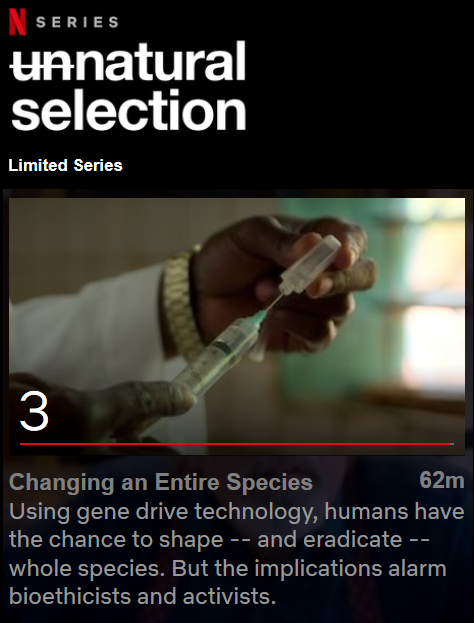Exploring Gene Editing: The Challenges and Promise of Gene Drive
Written on
Chapter 1: Introduction to Gene Drive
In the long journey of humanity, those who have succeeded are often the ones who collaborated and adapted most effectively, as stated by Charles Darwin. This episode of the docuseries focuses on gene drive, a cutting-edge technique designed to alter organisms by enabling them to perform genome editing autonomously. The goal is that all offspring will inherit these modifications. This method builds upon the CRISPR technology discussed in prior episodes. Theoretically, gene drives could be employed to eradicate diseases, such as those transmitted by mosquitoes, and to manage the spread of invasive species. These are significant challenges that current methods fail to address promptly and effectively.
The episode specifically examines two initiatives involving gene drive: one aimed at curbing the malaria-carrying mosquito population and another targeting invasive rat species in New Zealand. While the potential benefits are substantial, there are also concerns regarding the unforeseen consequences and the possible agendas of profit and warfare that could accompany these advancements.
Section 1.1: Malaria in Burkina Faso
A significant focus is placed on the malaria crisis affecting various African nations, particularly Burkina Faso. The severity of this issue is often overlooked in mainstream media. The documentary emphasizes the experiences of locals who have all encountered malaria, highlighting a critical lack of awareness regarding its transmission and prevention methods, such as the use of mosquito nets.
The research indicates that mosquitoes are evolving at the genomic level, developing resistance to insecticides. New strategies are urgently needed to combat malaria. Unlike Europe, which successfully eliminated the disease using insecticides over extended periods—coupled with educational initiatives—Burkina Faso struggles with inadequate resources and educational access.
An Italian lab is pioneering a gene drive strategy that could lead to the production of only male mosquitoes, ultimately leading to the collapse of their population. However, the need for informed consent from local communities presents a challenge, especially when many residents lack a comprehensive understanding of gene drive technologies.

Section 1.2: Invasive Species in New Zealand
Invasive species, often introduced through human activity, pose significant threats to native ecosystems. In New Zealand, the rapid reproduction of invasive rat populations complicates traditional management efforts, necessitating innovative approaches like gene drive.
Dr. Kevin Esvelt visits New Zealand to engage with residents about the gene drive proposal. This segment underscores the importance of dialogue between scientists and the public. However, it also reveals apprehensions regarding potential colonial overtones and the influence of military funding on research agendas.
The prevailing method of rat control in New Zealand involves toxic substances, which can also harm other species, including humans. When weighing the risks and benefits, gene drive emerges as a promising alternative. Yet, the New Zealand government ultimately opted against releasing gene drive-modified organisms, favoring alternative control strategies.
Chapter 2: Ethical Considerations in Gene Drive Research
During the UN Convention on Biodiversity, discussions arose about a possible moratorium on gene drive applications. Some researchers argue that such restrictions could push these experiments underground, rather than curbing them.
Meanwhile, the documentary follows the progress of a biohacking initiative aimed at testing HIV therapies. Initial results indicate a rise in viral load for the volunteer patient, prompting Ascendence Labs to refine their approach. Concerns linger about the rapid commercialization of treatments, which may compromise ethical standards and patient safety.
The ethical landscape surrounding gene drive remains complex. While military and governmental funding can facilitate significant research, it also raises suspicions about ulterior motives. Striking a balance between addressing human-created challenges, such as invasive species and disease, and ensuring responsible scientific practices is imperative.
As we navigate the possibilities offered by gene editing, it's crucial to engage in open discussions among diverse stakeholders. The line between what we can do and what we should do remains blurred, necessitating careful consideration as we move forward.
The first video titled "Unnatural Selection: Season 1 | Main Trailer | Netflix" offers a glimpse into the themes explored in the docuseries, including the implications of gene editing technologies.
The second video, "Unnatural Selection Netflix Documentary - Biohacking And Gene Therapy," delves into the intersection of biohacking and gene therapy, highlighting the transformative potential and ethical dilemmas of these advancements.